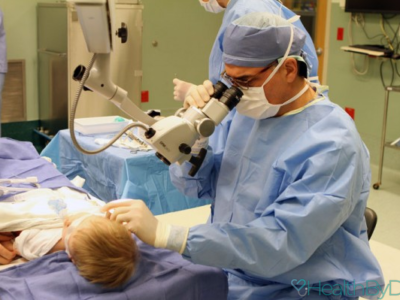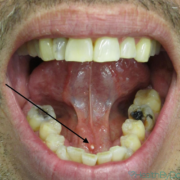Ear Drum Surgery is a crucial medical procedure performed to repair damage to the ear drum, also known as the tympanic membrane. This delicate membrane plays a vital role in our ability to hear, serving as a barrier that prevents foreign materials from entering the inner ear while transmitting sound waves. Unfortunately, ear drum perforations can occur due to various factors, including trauma, chronic infections, and even improper cleaning techniques. When self-healing is not possible, options such as tympanoplasty or myringoplasty may be recommended to restore the membrane’s integrity. Understanding the causes of ear drum perforation and the surgical processes involved is essential for effective ear surgery recovery and maintaining optimal hearing health.
Often referred to as tympanic membrane repair, Ear Drum Surgery encompasses various surgical techniques aimed at restoring the functionality of the ear drum. This procedure may be necessary due to several ear perforation causes, such as trauma or persistent infections that hinder natural healing. Different approaches like myringoplasty and tympanoplasty are employed depending on the severity of the damage. Post-surgery, patients can expect a recovery phase that requires careful management to ensure the successful healing of this vital structure. Exploring the intricacies of ear surgery provides valuable insights into maintaining auditory health and the importance of timely medical intervention.
Understanding Ear Drum Surgery
Ear drum surgery, also known as tympanoplasty, is a critical procedure aimed at repairing a damaged or perforated ear drum. The ear drum, or tympanic membrane, plays a vital role in hearing by transmitting sound waves to the middle ear. When the ear drum is compromised, it can lead to significant hearing loss and chronic infections. Understanding the intricacies of ear drum surgery is essential for patients facing this condition, as it not only addresses the immediate issue but also helps prevent further complications.
The surgery itself involves various techniques depending on the severity of the damage. For smaller perforations, a less invasive method called myringoplasty may be used, where the perforation is patched to support natural healing. In contrast, larger or more complex issues may require a tympanoplasty, which involves reconstructing the ear drum using grafts from either the patient’s own tissue or synthetic materials. Knowing the differences between these procedures can help patients make informed decisions about their treatment options.
Causes of Ear Drum Perforation
Ear drum perforation can occur due to several factors, with trauma being one of the leading causes. This includes accidental damage from objects like cotton swabs or sharp instruments, as well as sudden pressure changes when flying or diving. Chronic ear infections can also cause the ear drum to weaken and rupture, leading to complications that may necessitate ear drum surgery. Understanding these causes is crucial for prevention and early intervention.
In addition to physical trauma and infections, other less common causes of ear drum perforation include barotrauma, which occurs when there is a rapid change in air pressure, and acoustic trauma from exposure to loud noises. Identifying the root cause of ear drum damage is vital for determining the most effective treatment plan and minimizing the risk of future occurrences.
When is Ear Drum Surgery Necessary?
Ear drum surgery becomes necessary when a perforation does not heal on its own after a certain period, usually around three months, particularly if there is no ongoing infection. In cases where the ear drum remains compromised, patients are at risk of chronic ear infections and further hearing loss. Symptoms such as persistent ear pain, discharge, and hearing difficulties should prompt consultation with an ENT specialist to assess the need for surgical intervention.
For children, recognizing the signs of ear problems can be more challenging, as they may not articulate their discomfort. Parents should be vigilant for symptoms like ear pulling or unusual irritability. If such symptoms are present, along with visible discharge, it is crucial to seek medical advice promptly. Early identification and treatment can prevent long-term complications and improve the likelihood of successful recovery from ear drum surgery.
How is Ear Drum Surgery Performed?
The performance of ear drum surgery varies based on the extent of the damage and the specific procedure chosen. For minor perforations, a myringoplasty may be sufficient, which involves placing a graft over the perforation to facilitate healing. This procedure is typically quick and can often be done under local anesthesia. In cases where the damage is more extensive, tympanoplasty is performed, which involves more intricate surgical techniques and may require general anesthesia.
During tympanoplasty, the surgeon may make an incision in the ear canal or behind the ear to access the ear drum. The damaged area is then repaired using tissue grafts, which may be taken from the patient’s own body. This meticulous process ensures that the ear drum is restored to its functional state, allowing for improved hearing and prevention of future issues. Understanding the surgical process can alleviate anxiety for patients facing these procedures.
Recovery After Ear Drum Surgery
Post-operative recovery after ear drum surgery is a critical phase that significantly impacts the success of the procedure. Initially, the ear is packed to support healing. Patients are typically advised to avoid getting the ear wet and to refrain from strenuous activities for a period of time. Most individuals can resume normal activities within a week, but it is essential to follow the surgeon’s instructions to avoid complications.
Monitoring for signs of infection, such as increased pain or discharge, is vital during the recovery period. If any concerning symptoms arise, it is crucial to contact the surgeon immediately. After the packing is removed, ongoing care involving cleaning and treatment with ointments may be required to ensure proper healing. Awareness of the recovery process helps patients understand what to expect and reinforces the importance of adhering to post-surgical care guidelines.
Frequently Asked Questions
What is Ear Drum Surgery and why is it performed?
Ear Drum Surgery, also known as tympanoplasty, is a procedure aimed at repairing a perforated or damaged ear drum. The ear drum is crucial for hearing as it vibrates to transmit sound waves to the middle ear. Surgery becomes necessary when the perforation is large, persistent, or leads to chronic inflammation and hearing loss.
What are the common causes of ear drum perforation?
Ear drum perforation can occur due to several reasons including trauma from inserting objects into the ear, sudden pressure changes while flying or diving, and chronic ear infections. Understanding these ear perforation causes helps in preventing the need for ear drum surgery.
When should one consider Ear Drum Surgery?
Ear Drum Surgery is considered when a perforation does not heal on its own after three months, especially if accompanied by hearing loss or chronic infection. Factors such as the patient’s age and history of ear issues are also evaluated to determine the necessity of the surgery.
How is the myringoplasty procedure performed for ear drum repair?
Myringoplasty is a minimally invasive procedure used for ear drum repair, where a small perforation is patched using materials like gelatine or fat from the ear lobe. This technique supports the natural healing process and is suitable for small perforations.
What can patients expect during recovery after ear drum surgery?
After ear drum surgery, patients will have their ear packed for one to three weeks. They can resume normal activities after a week but must keep the ear dry and avoid moisture. Monitoring for signs of infection, such as severe pain or discharge, is crucial during recovery.
| Key Points | Details |
|---|---|
| What is Ear Drum Surgery? | Surgery to repair a perforated ear drum, crucial for preventing hearing loss. |
| Causes of Ear Drum Perforation | Trauma from cleaning, pressure changes, and chronic infections. |
| When is Surgery Necessary? | If perforation is large and persists over three months without healing. |
| How is Surgery Performed? | Techniques include patch myringoplasty for small holes and tympanoplasty for larger issues. |
| Recovery After Surgery | Ear packing for 1-3 weeks; avoid moisture and monitor for infections. |
Summary
Ear drum surgery is a vital procedure aimed at repairing a perforated ear drum to prevent potential hearing loss. Understanding the causes, necessity, and surgical methods of ear drum surgery is essential for those affected. Early intervention can lead to better outcomes, emphasizing the importance of consulting a specialist if symptoms arise.







Comments